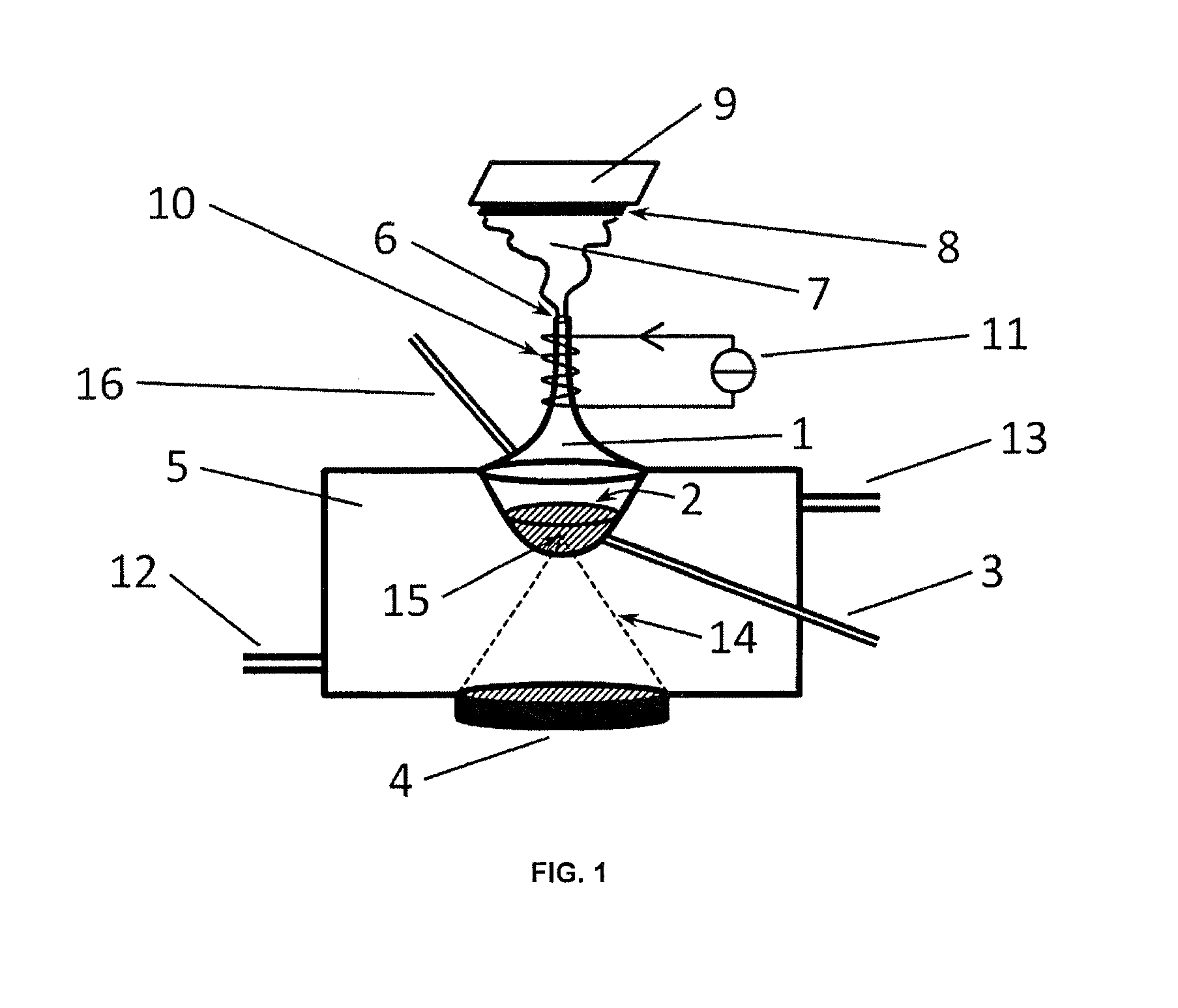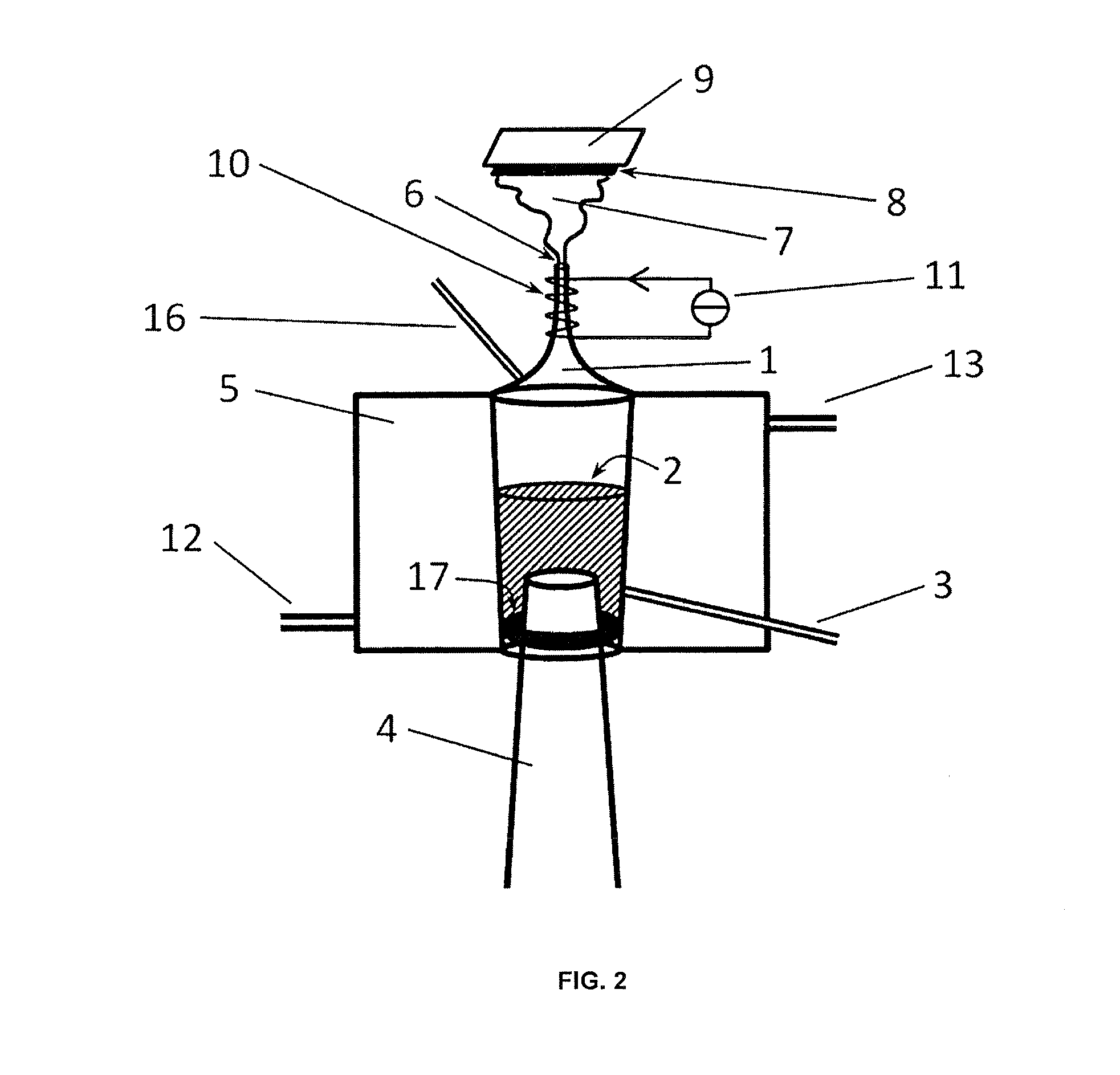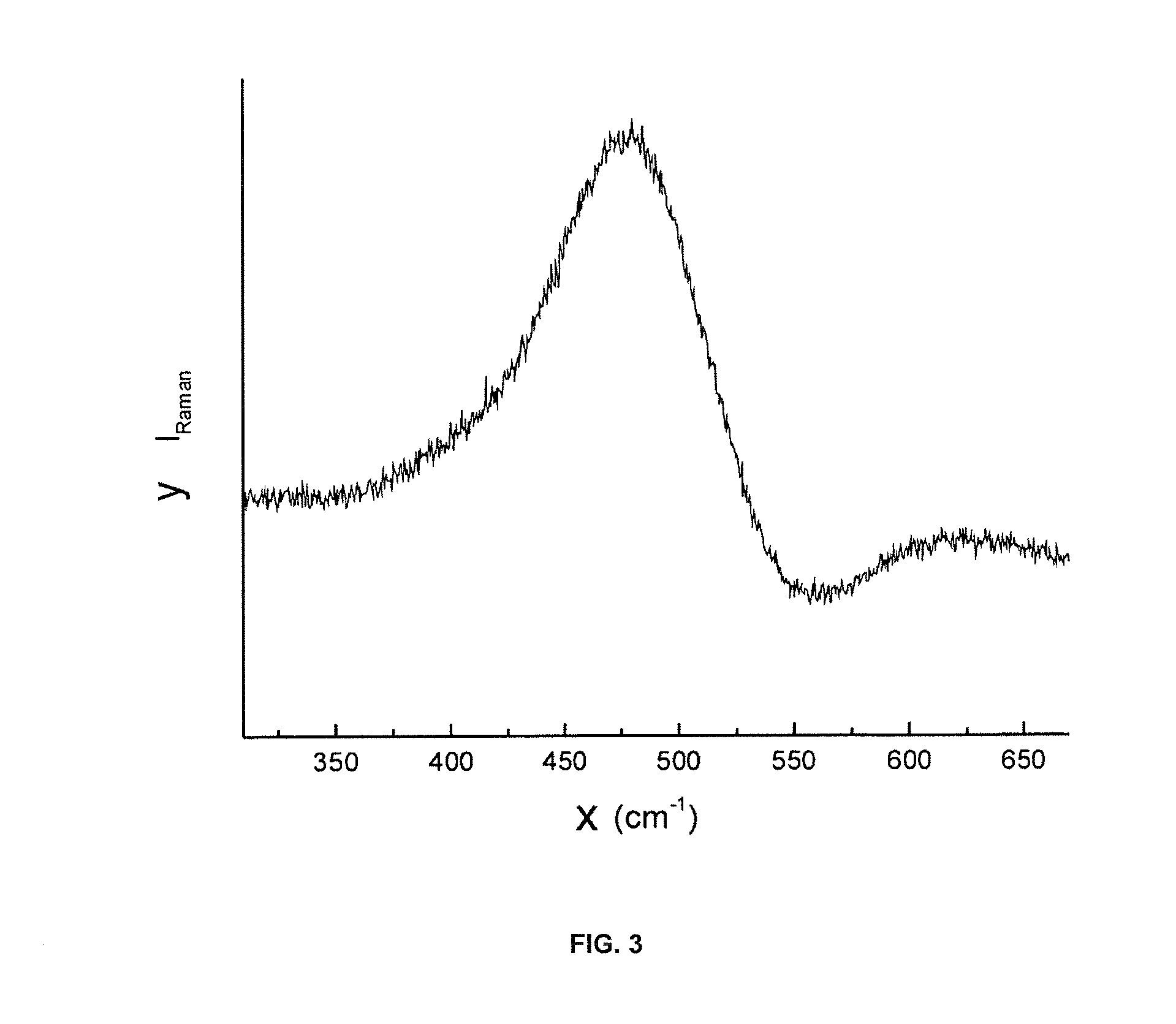Method and device for polymerizing a composition comprising hydridosilanes and subsequently using the polymers to produce silicon-containing layers
- Summary
- Abstract
- Description
- Claims
- Application Information
AI Technical Summary
Benefits of technology
Problems solved by technology
Method used
Image
Examples
example 2
Polymerization of a Composition by Way of a Sonotrode
[0079]A composition having a volume of 0.8 ml, including 5.6% by weight cyclopentasilane in cyclooctane, was placed in the reaction vessel (1) and sonified at a process temperature of less than 65° C. for approximately 50 minutes using an ultrasonic frequency of approximately 25 kilohertz (kHz), and caused to polymerize by way of acoustic cavitation until a slight turbidity was detectable. A sonotrode and the device according to FIG. 2 were used for this purpose. The opening (6) of the device was closed for the polymerization process. The mean molar mass Mw of the polymers produced according to the invention, ascertained by way of gel permeation chromatography (GPC), was 1430 g / mol.
example 3
Coating a Substrate with Polymers by Way of Spin Coating
[0080]The reaction products from Example 1, containing higher hydridosilanes, were subsequently removed from the device via the feed / discharge pipe (3) and applied to a glass substrate by way of spin coating, which is known from the prior art, at a rotation speed of 2000 revolutions per minute (rpm) for 45 seconds. Following conversion on a heating plate at approximately 350° C., the layer had a thickness of 25 nm. FIG. 3 shows a Raman spectrum of this silicon layer, in which it is apparent that the layer has a completely amorphous character due to the transverse optical (TO) Raman scattering peak at an approximate wavenumber of 480 cm−1.
[0081]The reaction products from Example 2 were likewise applied to a glass substrate by way of spin coating at 2000 rpm for 50 seconds and subsequently converted at approximately 350° C. The thickness of the resulting amorphous layer was 38 nm.
example 4
Coating a Substrate with Nanoparticles with the Aid of Nanoparticle Aerosol Droplets
[0082]A composition containing Fe2O3 nanoparticles having a diameter of approximately 40 nm was dispersed in an organic / inorganic solvent mixture, placed in the reaction vessel (1), and subsequently converted into nanoparticle aerosol droplets by way of acoustic cavitation and / or capillary waves, and applied to a structured substrate surface. A piezoceramic and the device according to FIG. 1 were used for this purpose. The coating of the substrate surface with the nanoparticle aerosol droplets was carried out at room temperature (approximately 23° C.) and within a coating time of approximately 3 seconds. The acoustic cavitation and capillary wave formation triggered by the piezoceramic resulted in the formation of nanoparticle aerosol droplets, which migrated through the opening (6) of the reaction vessel (1) and were deposited on the substrate (8), which is disposed opposite the opening (6). As is a...
PUM
| Property | Measurement | Unit |
|---|---|---|
| Temperature | aaaaa | aaaaa |
| Temperature | aaaaa | aaaaa |
| Temperature | aaaaa | aaaaa |
Abstract
Description
Claims
Application Information
 Login to View More
Login to View More - R&D
- Intellectual Property
- Life Sciences
- Materials
- Tech Scout
- Unparalleled Data Quality
- Higher Quality Content
- 60% Fewer Hallucinations
Browse by: Latest US Patents, China's latest patents, Technical Efficacy Thesaurus, Application Domain, Technology Topic, Popular Technical Reports.
© 2025 PatSnap. All rights reserved.Legal|Privacy policy|Modern Slavery Act Transparency Statement|Sitemap|About US| Contact US: help@patsnap.com



